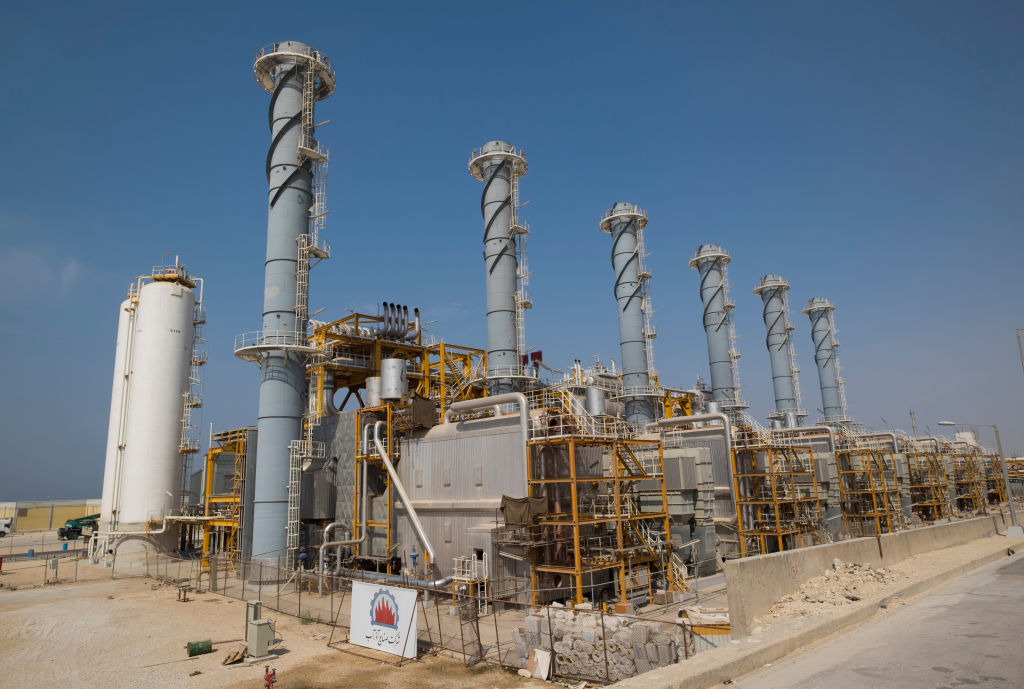Israel struck an installation at Iran’s South Pars gas field on Saturday, the first attack on Iran’s oil and gas sector as part of what the Israeli government had warned would be a prolonged operation to prevent Tehran from building an atomic weapon.
Iran has partially suspended gas production from the South Pars field, Iran’s portion of the world’s largest natural gas reserve, which lies beneath the Gulf and is shared with major gas exporter Qatar.
Israel also struck a Tehran fuel depot and an oil refinery near the capital on Saturday, Iran said, but authorities said the situation was under control.
Following are some facts on the country’s energy industry, exports, and the impact of previous Western sanctions.
WORLD’S LARGEST GAS RESERVE
Iran produces natural gas from the offshore South Pars gas field, which makes up around a third of the world’s largest reservoir of natural gas.
Iran shares the reservoir with major gas exporter Qatar, which calls its field the North Dome.
Sanctions and technical constraints have meant most gas Tehran produces from the South Pars field is for domestic use in Iran.
Iran’s total natural gas production totalled 266.25 billion cubic meters in 2023, with domestic consumption accounting for 255.5 bcm, according to data by the Gas Exporting Countries Forum, a grouping of gas exporter nations.
About 15.8 bcm of natural gas were exported, the Forum said.
Saturday’s attack struck four units of Phase 14 of South Pars, around 200 kilometres from Qatar’s gas installations, many of which are joint ventures with major international energy firms, including U.S. giants ExxonMobil and ConocoPhilips.
Doha has made hundreds of billions of dollars exporting liquefied natural gas to global markets for nearly three decades.
The entire reservoir contains an estimated 1,800 trillion cubic feet of usable gas – enough to supply the entire world’s needs for 13 years, or to generate enough electricity to supply the U.S. for more than 35 years.
SANCTIONS AND OPEC
Iran’s oil production was at its peak in the 1970s, with record output of 6 million bpd in 1974, according to OPEC data. That amounted to more than 10% of world output at the time.
In 1979, the U.S. imposed the first wave of sanctions on Tehran. Since then the country has been the target of several waves of U.S. and European Union sanctions.
The U.S. tightened sanctions in 2018 after Trump exited a nuclear accord during his first presidential term. Iran’s oil exports fell to nearly zero during some months.
Exports rose steadily under Trump’s successor President Joe Biden’s administration, with analysts saying sanctions were less rigorously enforced and Iran had succeeded in evading them.
Iran is exempt from OPEC+ output restrictions.
WHO IS THE MAIN BUYER OF IRANIAN OIL?
Iran’s crude exports have risen to a multi-year high of 1.8 million bpd in recent months, the highest since 2018, driven by strong Chinese demand.
China says it does not recognise sanctions against its trade partners. The main buyers of Iranian oil are Chinese private refiners, some of whom have recently been placed on the U.S. Treasury sanctions list. There is little evidence, however, that this has impacted flows from Iran to China significantly.
Iran has for years evaded sanctions through ship-to-ship transfers and hiding ships’ satellite positions.
PRODUCTION AND INFRASTRUCTURE
Iran, the third largest producer in the Organization of the Petroleum Exporting Countries, extracts about 3.3 million barrels per day of crude oil, and another 1.3 million bpd of condensate and other liquids, totalling about 4.5% of global supplies.
It exported about 1.8 million bpd of crude and condensate in May, close to a 2018 peak, according to Kpler, processing the remainder of its production in its domestic refineries with a total capacity of 2.6 million bpd, according to consultancy FGE.
It exported nearly 750,000 bpd of oil products, including LPG, in May, according to Kpler.
The country also produces 34 billion cubic feet of gas per day, according to FGE, accounting for 7% of global production. All gas is consumed domestically.
Iran’s hydrocarbon production facilities are primarily concentrated in the southwest, in the Khuzestan province for oil and in the Bushehr province for gas and condensate from the giant South Pars field.
It exports 90% of its crude via Kharg Island.
Analysts say Saudi Arabia and other OPEC members could compensate for the drop of Iranian supply by using their spare capacity to pump more. However, with a number of producers in the group currently in the process of raising output targets, their spare capacity is becoming more strained.
(Reuters)










